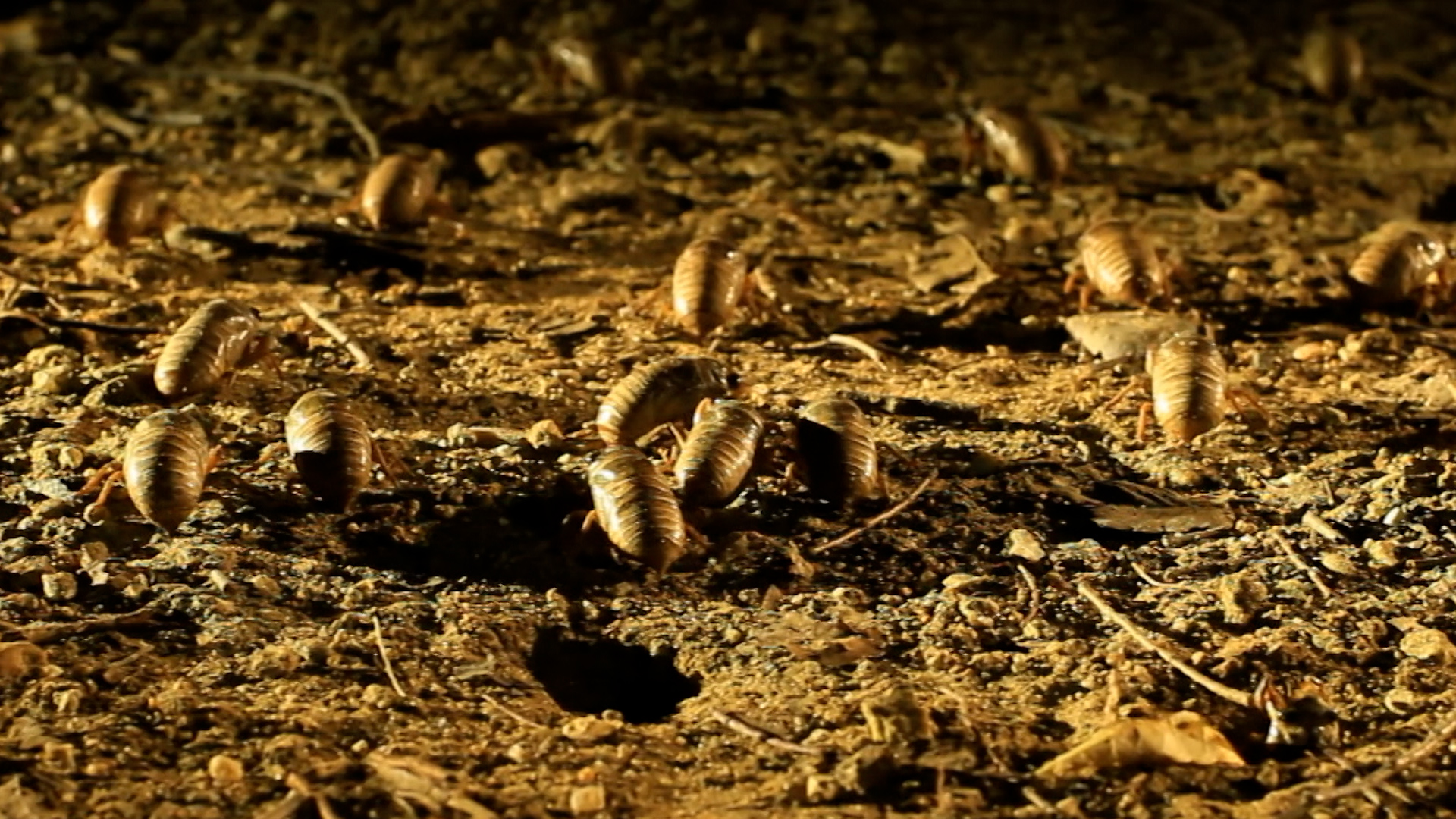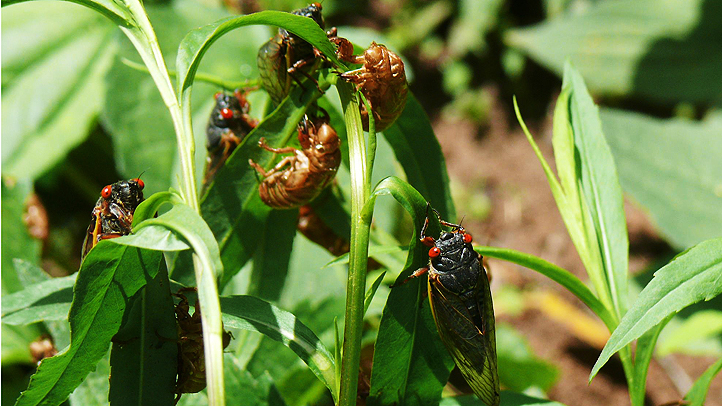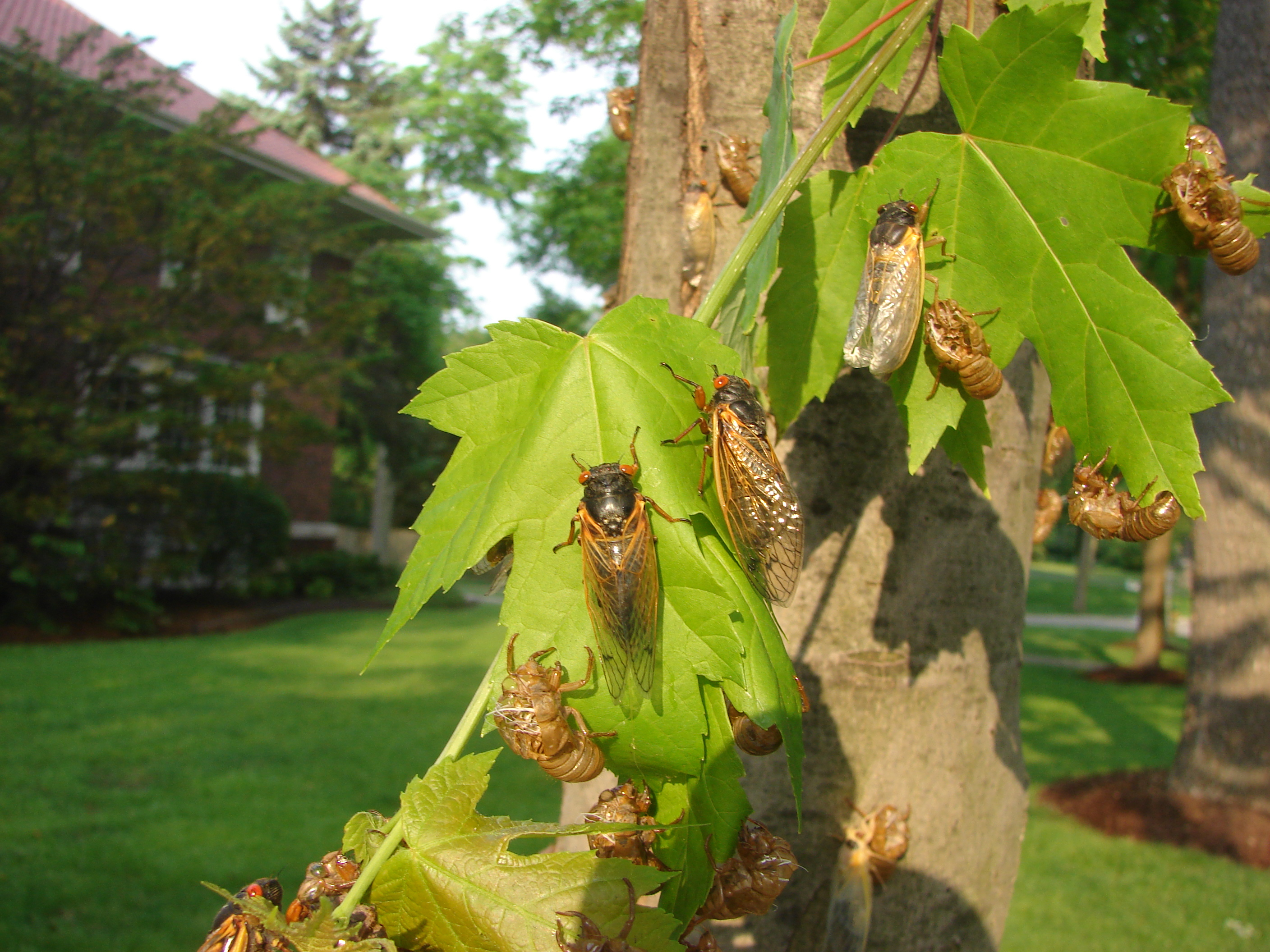Two periodical cicada broods are set to emerge from the ground in Illinois simultaneously this spring, marking a rare event that hasn’t been seen in centuries — but don’t call it a plague.
And don’t call them locusts, either, experts say, although the mix-up is common.
“We often call cicadas locusts, but they are not one and the same,” a post from the Forest Preserve District of Will County reads. “They aren’t even closely related.”
The post goes on to say that cicadas are beneficial for the environment, while locusts — a kind of grasshopper — “have had highly destructive effect on crops for centuries.”
“Locusts sometimes form enormous swarms that can devour plants, often entire fields of crops, according to National Geographic,” the posts reads. “The locusts are normally solitary, so when swarms develop it can have a devastating impact on the agricultural industry in the area where it occurs.”
MORE: The 1 thing you can do to potentially limit the number of cicadas in your yard, according to experts
The post went on to say that North America does not have locust swarms, but that they occur in other parts of the world.
“They are most destructive in certain regions of Africa, where the loss of agricultural crops can cause starvation and famine,” the preserve said.
Periodical cicadas on the other hand, are mostly harmless, according to experts. They also play a large role in Illinois’ ecosystem, as they get composted back into the soil from which they emerged.
“That’s kind of the great role they play within our ecosystems, is they spend a lot of time concentrating nutrients from a really good food resource that is the xylem and plants,” said Allen Lawrance, associate curator of entomology at Peggy Notebaert Nature Museum. “And then, when they emerge en mass, they return those nutrients to the soil in one big group.”
Those nutrients could result in a “big boost” in plant growth over the next couple of years, Lawrance added.
“All the animals that are around when they emerge are going to be very full and happy,” Lawrance said. “Plants are going to get a boost in fertilizer for a little bit. ….When we have extreme weather events, like a drought, that cicada emergence happens at the right time that can provide a really valuable food source when nutrients are very scarce.”
According to Lawrance, those nutrients could also be used in home gardens.
“If you want to fertilize your garden, or save on fertilizer for your garden, you could just throw some piles of cicadas in there as they decompose,” Lawrance said.
Which Broods are emerging in Illinois?
For the Chicago area, Brood XIII will be most seen in parts of northern Illinois and Indiana, and possibly even in Wisconsin and Ohio, in late May 2024, Dr. Gene Kritsky, dean of Behavioral and Natural Sciences at Mount St. Joseph University in Cincinnati, said in a 2023 press release.
The Northern Illinois Brood itself is huge, with a reputation for the “largest emergence of cicadas anywhere,” according to the University of Illinois.
In 1956, entomologists reported as many as 311 “emergence holes” per square yard in a forested floodplain near Chicago, which experts say translated to 1.5 million cicadas per acre, according to the University of Illinois.
“When the cicadas start dying and dropping from the trees later in the spring, there are large numbers on the ground, and the odor from their rotting bodies is noticeable,” U of I reports. “In 1990, there were reports from people in Chicago having to use snow shovels to clear their sidewalks of the dead cicadas.”
Meanwhile, Brood XIX, or the Great Southern Brood cicadas, have a more widespread population, covering parts of Missouri, Illinois, Louisiana, North Carolina, Virginia and Maryland.
“Brood XIX is arguably the largest (by geographic extent) of all periodical cicada broods, with records along the east coast from Maryland to Georgia and in the Midwest from Iowa to Oklahoma,” the University of Connecticut reports. “Although 13- year cicadas are generally considered to have a southern distribution, the northernmost known record of this brood is in Chebanse, IL, roughly 75 miles from Chicago’s Loop.”
When will the cicadas come out?
Chicago officials issued an advisory last week, saying the first emergence is expected sometime around late April through early June, but the city might not see as much of an impact.
Cicadas typically emerge as the ground begins to warm in the spring and early summer.
MORE: When will cicadas emerge in Illinois? Here’s a clue
That means an emergence is likely between mid-May and early June, though some could start as early as late April.
According to an article from the University of Illinois Urbana-Champaign Extension, the Northern Illinois Brood’s emergence typically occurs in May and June, and lasts approximately four weeks.
“Adult cicadas will be active until mid- to late-June, but you will see evidence long after they are gone, including their wings, molts, and decomposing bodies,” cicada expert Catherine Dana, an affiliate with the Illinois Natural History Survey, told NBC Chicago.
Where will they be?
With Brood XIII and Brood XIX both set to pop out of the ground simultaneously, Illinois will be in a unique position to witness the once-in-a-lifetime emergence.
“This is like the year for Illinois,” cicada expert Catherine Dana, an affiliate with the Illinois Natural History Survey, told NBC Chicago. “We are going to have cicadas emerging all over the state.”
Across most of Illinois and the Chicago, at least one of the two broods is likely to emerge, but in a narrow part of the state, both could emerge at the same time, in the same place.
“Somewhere around Central Illinois, probably like around Springfield, is what some researchers are predicting we may see some overlap of these two … different broods,” Dana said. “It’s not going to be a large area. But there will likely actually be some mating happening between these two broods, which is going to be really exciting.”
Here’s a map of what to expect in Illinois, according to data from the USDA Forest Service.
“Most of the state of Illinois will experience periodical cicada emergence in 2024,” the University of Illinois reported.
How many cicadas are expected in Illinois?
The Northern Illinois Brood itself is huge, with a reputation for the “largest emergence of cicadas anywhere,” according to the University of Illinois.
In 1956, entomologists reported as many as 311 “emergence holes” per square yard in a forested floodplain near Chicago, which experts say translated to 1.5 million cicadas per acre, according to the University of Illinois.
“When the cicadas start dying and dropping from the trees later in the spring, there are large numbers on the ground, and the odor from their rotting bodies is noticeable,” the U of I reports. “In 1990, there were reports from people in Chicago having to use snow shovels to clear their sidewalks of the dead cicadas.”
Experts anticipate “enormous numbers” once again, with anywhere from 50,000 cicadas per acre to 1.5 million cicadas per acre could emerge for the spring of 2024.
“That is possible because remember that every single individual cicada will produce, their nymphal skin will be shed, that builds up and then as they start dying after they’re done with their reproduction and laying eggs, that’ll start collecting,” Kritsky said. “And people have been known to have to shovel some of those excess carcasses and shells away from their their trees, because … after that happens, after they collect in the trees, they can start smelling as they decay.”
Dana added that gutters could also become clogged.
“You might need to shovel them out of the gutters, you know, we don’t want to block up our gutters,” she said. “Oftentimes, I see them kind of in piles, you know, along with the shells, right? I see them in piles at the base of trees, like right in the nooks in between the roots. They tend to get a lot of piles there. But just add them to your compost pile, you know, just let them break down.”
from NBC Chicago https://ift.tt/rMOkGeE




No comments:
Post a Comment